Abydos
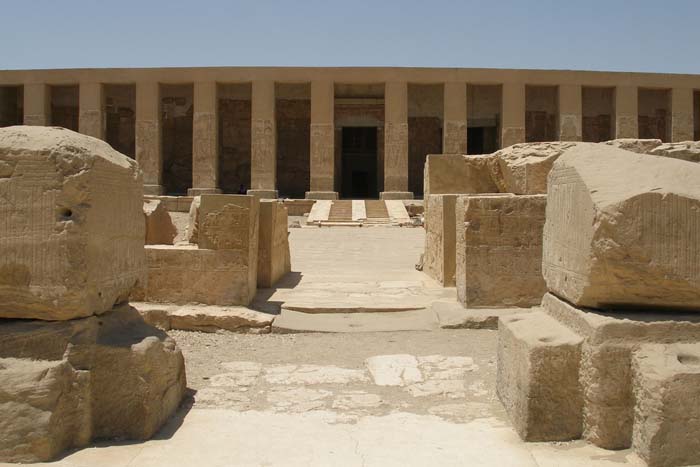
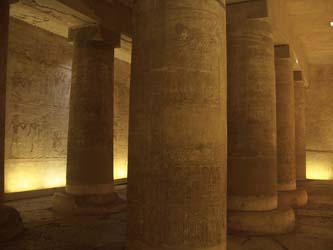
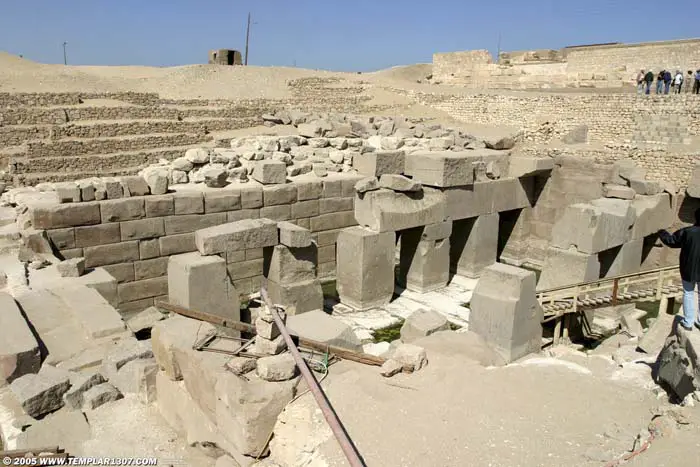
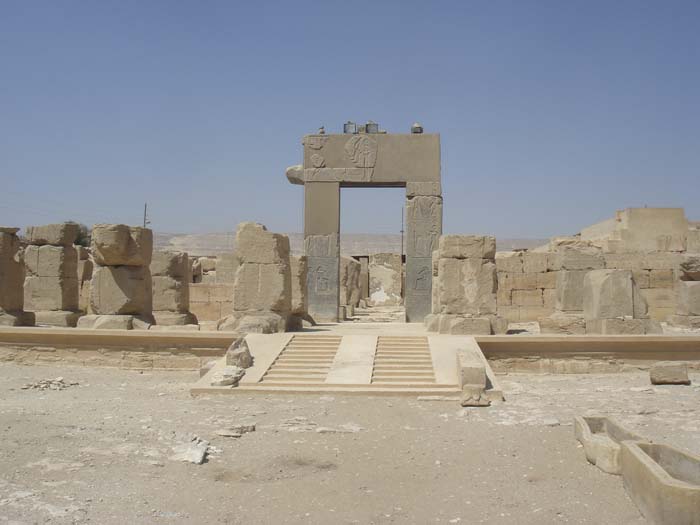
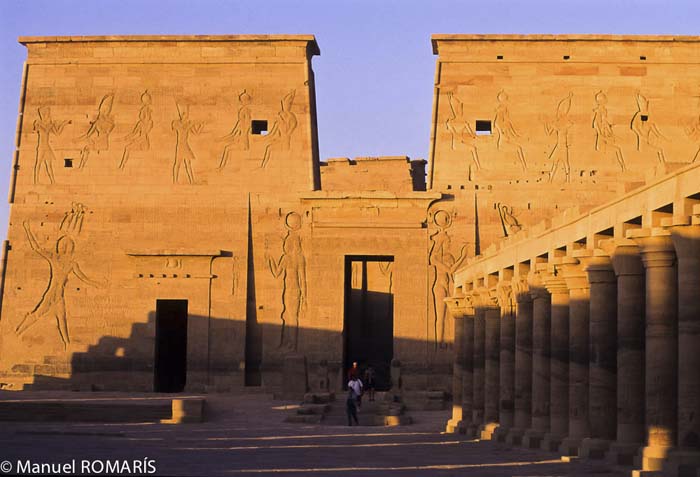
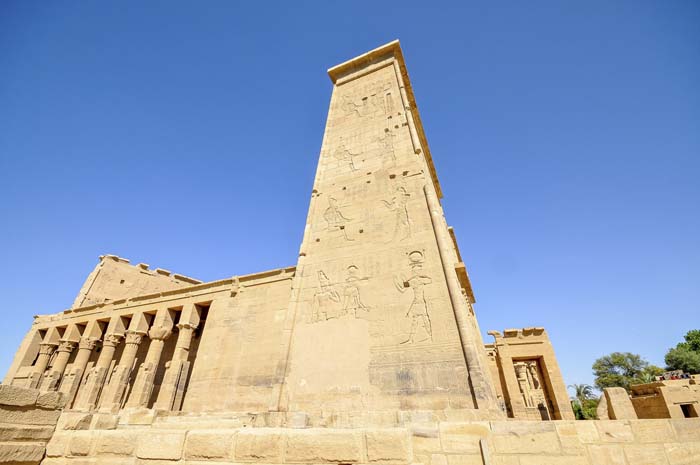
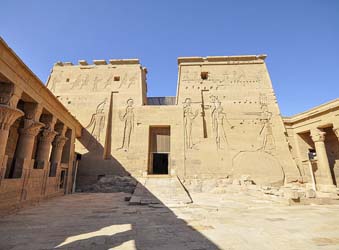
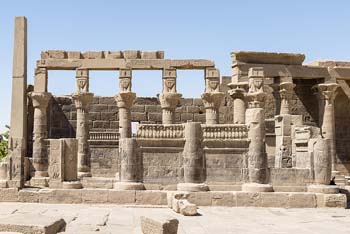
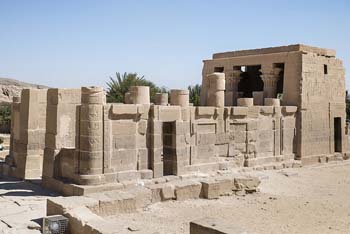
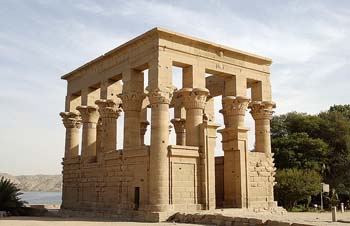
Abydos was the site of the mortuary temple of Seti I. This temple is important to Egyptologists because a relief included the Abydos King’s list. Some of Abydos’ ancient temples are under the modern town on the site. Abydos was one of the centers of Osiris’ worship and it was a place that claimed to be Osiris’ tomb.
Abydos is the cult center of Osiris, god of the dead. The necropolis is a place of pilgrimage and burial and at least ten temples were originally constructed here. Among those ten temples, three remain that are of special note. These include the Temple of Seti I, the Great Osiris Temple and the Ramses II Temple. Among these three, the Temple of Seti I is the most well-preserved.
The Temple of Seti I
Built circa 1300 BC by Seti I and his son (Ramses II), the main monument of the Temple of Seti I contains many detailed reliefs that are among the best of the New Kingdom. It originally stood 550 feet in length and 350 feet wide. This temple was dedicated to the gods Horus, Osiris, Isis, Amun-Ra, Ra-Horakhty and Ptah. The Temple of Seti I is a little out of the ordinary because it is L-shaped, unlike other Egyptian temples. At the entrance to the temple on the north end, the remains of a pylon and forecourt contain reliefs of Ramses II defeat at Qadesh.
Made of sandstone and limestone, the Temple of Seti I houses many sanctuaries. Two courtyards lead up to the main entrance, and then a Hypostyle hall. The Hypostyle hall has columns that support the roof. There are 24 of these papyrus-style columns and they contain reliefs of different aspects of Ramses II life. One of the scenes depicts Khnum, the God of Creation and Waters creating Ramses II in the presence of Ptah. Another scene depicts Ramses II being nursed by Hathor and Isis. Still another scene is of the king’s purification ceremony. These columns form seven aisles that lead to the second Hypostyle hall, and onto the unusual seven chapels.

© Vyacheslav Argenberg - The temple of Seti I at Abydos
The second Hypostyle hall contains 36 lotus-bud columns with reliefs of exceptional quality including fertility figures. The seven chapels beyond the Hypostyle hall were dedicated to Seti I, Ptah, Ra-Harakhte, Amun Re, Osiris, Horus and Isis. The Osiris chapel leads to the Osiris complexwhich itself contains halls and chapels. Each of these chambers has a stele, which is a commemorative stone slab that honors the chamber's specific god.

© isawnyu - The Osiris Complex
One of the most interesting aspects of the Temple of Seti I is the Abydos King List, also called the Abydos Table. This list contains the names of 76 kings and pharaohs of ancient Egypt. There are three rows with 38 cartouches on each row. A cartouche is an oval with a horizontal line on one end, expressing that the text inside the oval is a name of royalty. “Unfit” pharaohs were not included on this list. A couple of the “unfit” pharaohs were Hatshepsut and the Amarna pharaohs like King Tut.
Another interesting feature inside the Temple of Seti I are the mysterious hieroglyphs. Today, they resemble modern day machines like a yacht, submarine, fighter plane and helicopter. This is likely the result of erosion and writing over original inscriptions which left the remaining text to look like modern day vehicles. Dating back 3,000 years, these mysterious hieroglyphs at first stumped the public and Egyptologists, but the debate has been put to rest and linked to years of wear and tear.
The Great Osiris Temple
About a half a mile northwest of the Temple of Seti I lies the Great Osiris Temple. Unfortunately, because it was originally constructed in mud brick, most of the temple lies in ruins. All that remains of the Great Osiris Temple is its wall, which is now known as an enclosure. Dating back to the Old Kingdom, the Great Osiris Temple was dedicated to the god Khenty-Amentiu, a major funerary deity who eventually became integrated with Osiris. Some of the items found here include a 1st Dynasty vase and small figures of men and animals. The Festival of Osiris originated at this temple.

© Benjamin - Ruins at the Temple of Osiris
The Ramses II Temple – also called the “Portal Temple”
In addition to building the Temple of Seti I with his father, Ramses II also built his own temple, about 300 yards northwest of his father's. Constructed from limestone with sandstone pillars, this temple is colorful and more modern than the Temple of Seti I. The Ramses II temple boasts door frames made of pink and black granite, with a sanctuary made of alabaster. At the entrance are a ruined pylon and court with a pink granite portal leading into a peristyle court (no roof). The second court is surrounded by pillars that depict Ramses II in an Osirid pose. An Osirid pose resembles the look of a mummy, with arms crossed across the chest. A portico leads to two halls flanked by pillars with chapels off those halls. Dating back to the Middle Kingdom, reliefs of the Battle of Kadesh are found here.

© Daryl Manning - Ramses II Temple Abydos, Egypt
Quick Facts
- Abydos is the cult center of Osiris and one of the earliest sacred sites in ancient Egypt.
- The three main temples, out of more than ten originally built, are the Temple of Seti I, the Great Osiris Temple and the Ramses II Temple.
- The Temple of Seti I is the most well preserved and it is distinguished by the L-shaped layout.
- Key aspects of the Temple of Seti I are the seven chapels, the Abydos King List and the mysterious hieroglyphs found.
- The Great Osiris Temple lies in ruins, but it is where the Festival of Osiris originated.
- The Ramses II Temple is more modern in appearance and displays reliefs of the Battle of Kadesh.
Philae
Philae was an island with several temples that was also moved in the 1960s to protect them from flooding. Temples to Hathor and Isis were on the island. The island of Philae was a sacred space and only priests could live there. Another tomb of Osiris was on the island.
Philae was the cult center of Isis. It measures only about 1,500 feet by 500 feet. Due to its vulnerability to flooding, high walls with granite foundations were constructed around the island and its temples.
The Temple of Isis at Philae
Although there are several temples and buildings located on Philae, the largest and perhaps the most famous is the Temple of Isis. Here, the ancient Egyptians worshiped Isis as well as Osiris and Horus (her son). Ptolemy II, Nectanebo I built the temple around 370 BC.

© Manuel ROMARÍS - Temple of Isis, Philae
The main features of this temple include:
Gate of Ptolemy II: Two pink granite lions stand in front of the first pylon by this gate. Two pink granite obelisks at one time joined the lions together. These obelisks are significant because the hieroglyphs found on the base of the obelisks were compared to the Rosetta stone, and were instrumental in deciphering the Egyptian consonantal alphabet.
First Pylon: Reliefs and inscriptions are abundant in the Temple of Isis. For example, on the eastern tower of the first pylon, Dionysus is depicted as holding the enemies of Egypt by the hair while raising his club. Others in the scene include Hathor, Horus and Isis. Above this menacing depiction there are two smaller scenes. One is of the pharaoh offering his crown to Horus and Nephths, and one is of the pharaoh offering incense to Isis and Horus as a child.

© Jorge Láscar - Side of the First Pylon and the forecourt of the temple
Birth House: A common feature in Ptolemaic temples, the Birth House in the Temple of Isis depicts Horus as a hawk wearing a double crown standing among papyrus. There is also a relief of Isis carrying a newborn Horus in her arms while being protected by Wadjet, Nekhbet, Amun-Ra and Thoth. Here, the king conducted rituals to validate his descendancy from Horus.
Second Pylon: The Western Tower depicts Ptolemy XII offering animals and incense to various gods including Hathor and Horus. Also depicted is the king offering flowers to Nephthys and Horus, and another of the king pouring water and presenting incense on an altar while in the presence of Horus, Isis and Osiris. A piece of granite along the Eastern Tower called a stele is carved of Ptolemy VI Philometor standing with Cleopatra II and Isis and Horus. The inscription is notable because it contains what is known as the grant of the Dodekaschoinoi, which lays claim to the land needed for the temple.

© Jorge Láscar - Second Pylon
Inner Courtyard: A Hypostyle hall stands through a gateway from the second pylon. Ten columnsremain here and all are painted to look like and represent a variety of the first flowers and plants. The floor represented the primeval mound and the ceiling the sky, with images of the Day Boat (Madjet) and the Night Boat (Semektet).
Sanctuary: Through the Inner Courtyard is Isis’ Sanctuary. The actual sanctuary is a small chamber with two windows. A pedestal, placed here by Ptolemy III Euergetes I, remains today. It bears the image of Isis in her sacred barque (boat).
Nectanebo’s Kiosk

© kairoinfo4u - The Kiosk of Nectanebo I
Nectanebo’s Kiosk is a pillared, roofless hall that originally had 14 columns, of which six remain. The walls of this vestibule are decorated with reliefs of the king sacrificing various items to the gods. Screen walls of the Kiosk are connected by Hathor columns and topped with uraei(serpentine) carvings.
Temple of Hathor at Philae

© kairoinfo4u - Temple of Hathor
Built by Ptolemy VI Philometor and Ptolemy VIII Euergetes II, the Temple of Hathor consists of a colonnade hall and a forecourt. Augustus decorated the hall to honor Isis and Hathor with depictions of festivals. Augustus is also depicted as presenting gifts to Isis and Nephthys. At The Temple of Hathor at Philae, the ancient Egyptians drank, ate and danced to music played by Bes (Dwarf God of humor, dancing and music) and his harp and tambourine.
Trajan’s Kiosk

© Derek - Trajan's Kiosk at Philae
Considered by many to be the most appealing structure on Philae, Trajan’s Kiosk is today a roofless structure. In ancient Egyptian times, it was likely roofed and used as a shelter for Isis’ barque at the eastern banks. It is sometimes referred to as the “Pharaoh’s Bed”; Trajan was a Roman Emperor but the kiosk itself likely dates back to earlier times. It is heavily decorated with reliefs of Trajan burning incense to honor Osiris and Isis, while also offering wine to Isis and Horus.
Additional Structures on Philae
The island of Philae has much to offer with not just the Temple of Isis but also the Temple of Hoe-Anhur, and the Temple of Augustus. There are also chapels dedicated to Mandulis (the Sun God of Lower Nubia) and Imhotep (a commoner who achieved divine status after death, he was vizier to Djoser).
No comments:
Post a Comment